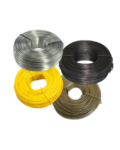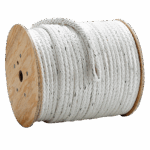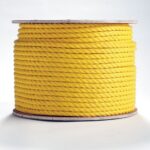7×7 vs 7×19 Galvanized Aircraft Cable: Comparison Guide
Selecting the correct cable construction is a decision that affects not only performance, but also long-term reliability, safety margins, and maintenance cycles. Among galvanized aircraft cable options, 7×7 and 7×19 are the two most commonly used constructions. While both meet rigorous industry standards, they behave very differently under load, in bending applications, and across their service life.
The right choice reduces fatigue failures, improves operational efficiency, and extends equipment longevity. The wrong choice can shorten service intervals, increase wear on hardware, or create avoidable downtime.
This guide provides a side-by-side comparison of 7×7 and 7×19 galvanized aircraft cable, outlining their structural differences, mechanical properties, and best-fit applications.
Construction and Strand Geometry
The designation system used in wire rope construction reflects strand and wire counts:
- 7×7: Seven strands, each made up of seven wires, totaling 49 wires. Produces a cable with moderate flexibility and higher stiffness than 7×19.
- 7×19: Seven strands, each made up of 19 wires, totaling 133 wires. Produces a cable with superior flexibility and fatigue resistance.
Both constructions are preformed for stability, galvanized for corrosion protection, and manufactured to federal specifications. The result is consistent quality suitable for demanding industrial, construction, and marine environments.
Mechanical Performance Characteristics
Flexibility
- 7×7: Moderately flexible. Best suited for applications requiring more rigidity and shape retention.
- 7×19: Highly flexible. Performs well in systems with pulleys, sheaves, or repeated bending.
Fatigue Resistance
- 7×7: Adequate under limited movement, but service life diminishes under high-cycle loading.
- 7×19: Superior fatigue performance, making it the construction of choice for dynamic applications.
Abrasion and Crush Resistance
- 7×7: Larger wires improve resistance to surface wear and deformation under hardware or clamps.
- 7×19: More vulnerable to abrasion, though flexibility helps mitigate stress concentrations in motion.
Breaking Strength
Both constructions provide comparable ultimate strengths for a given diameter. Working Load Limits must always be determined by applying the proper design factor to the published breaking strength.
Application Guidance
The practical distinctions between 7×7 and 7×19 become clear when mapped to use cases.
7×7 Galvanized Aircraft Cable is most effective where rigidity and abrasion resistance are critical:
- Static or semi-static control cables
- Guy wires, bracing, and support systems
- Security cables and barriers
- Architectural railings and signage supports
7×19 Galvanized Aircraft Cable is specified where dynamic bending and cycling dominate:
- Winch lines and hoist controls (non-lifting, utility applications)
- Garage door counterbalance systems
- Fitness equipment cables
- Stage rigging and marine pulley-driven systems
Material and Environmental Considerations
Both 7×7 and 7×19 constructions are widely available in galvanized carbon steel, providing a balance of tensile strength and corrosion protection for industrial and general outdoor environments.
For marine, chemical, or high-salt environments, stainless steel (Type 304 or Type 316) may be more appropriate. While stainless sacrifices a small degree of strength compared to galvanized carbon steel, Type 316 offers unmatched corrosion resistance in saltwater exposure.
Terminations and Hardware Compatibility
Cable performance is only as reliable as its terminations. Both 7×7 and 7×19 are compatible with standard hardware, provided installation follows best practices:
- Thimbles: Prevent deformation and wear in cable eyes. Strongly recommended in all load-bearing applications.
- Sleeves: Aluminum sleeves for galvanized steel; copper sleeves for stainless steel to minimize galvanic corrosion.
- Clips: Must be installed with correct spacing and torque. Always follow the “never saddle a dead horse” principle to maintain holding strength.
Erin Rope Corporation maintains inventory not only of cable but also of the fittings, clips, thimbles, and turnbuckles required to build compliant assemblies.

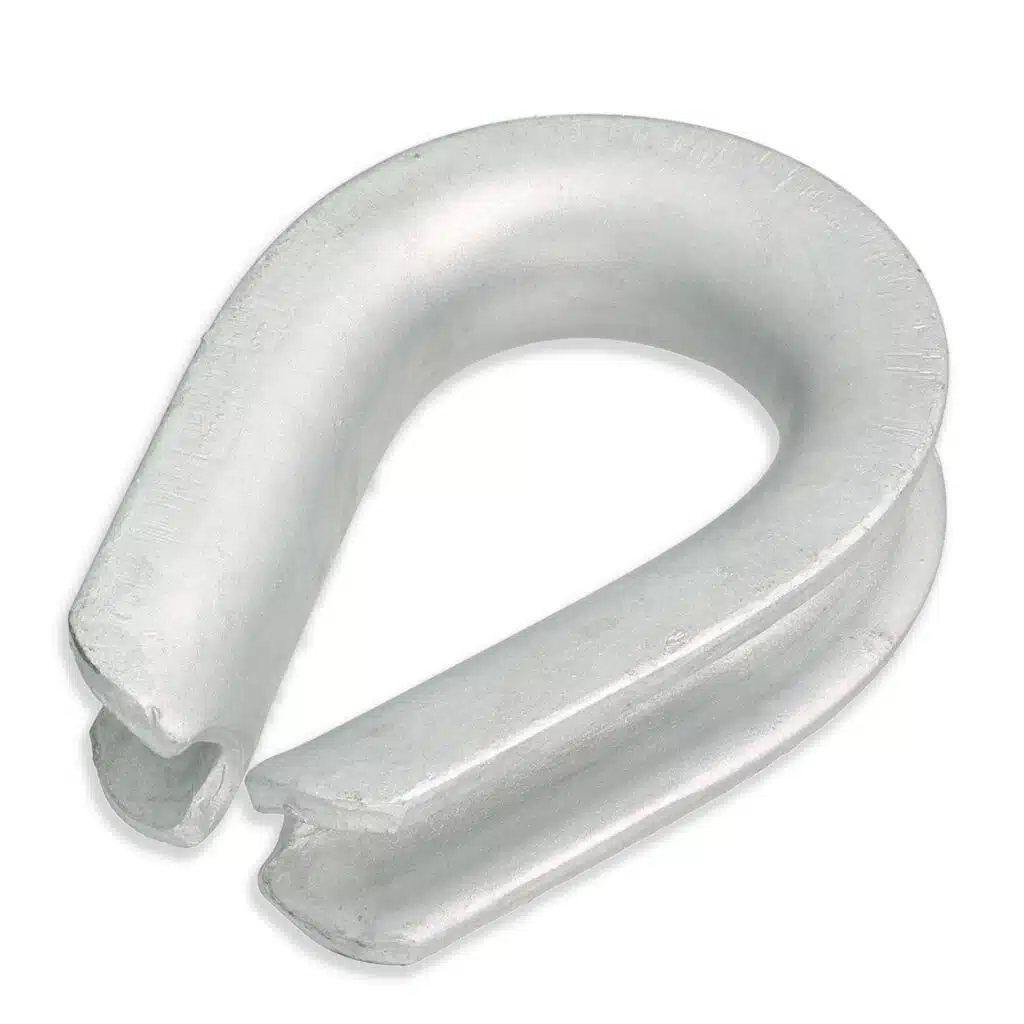
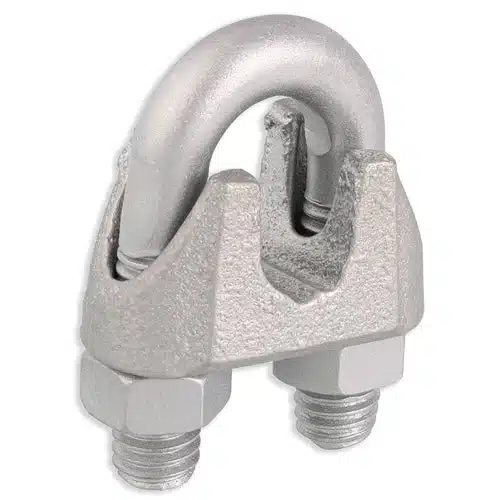
Inspection and Maintenance
Service life depends heavily on inspection and maintenance practices. Both constructions require routine evaluation for:
- Broken wires: Early indicator of fatigue.
- Kinks or birdcaging: Permanent deformations that compromise strength.
- Corrosion: Surface rust can accelerate wire failure.
- Abrasion or flattening: Common where cables run over improperly sized sheaves or under heavy clamps.
Cables exhibiting any of these conditions should be retired immediately to avoid failure.
Selection Framework
When specifying between 7×7 and 7×19, consider:
- Movement profile: Static vs dynamic
- Bend radius: Large vs small sheaves
- Service environment: Abrasive vs corrosive exposure
- Hardware compatibility: Coated vs bare terminations
In short:
- Select 7×7 when the priority is rigidity, abrasion resistance, and long-term stability in static systems.
- Select 7×19 when the priority is flexibility, fatigue life, and performance in high-cycle or pulley-driven systems.
Conclusion
The distinction between 7×7 and 7×19 galvanized aircraft cable is fundamental to performance. Both constructions are strong, reliable, and proven, but they are not interchangeable. For static runs, bracing, and architectural applications, 7×7 offers stability and wear resistance. For dynamic, pulley-intensive applications, 7×19 delivers the flexibility and fatigue resistance required to maintain safety and efficiency.
At Erin Rope Corporation, we stock both constructions in multiple diameters. Our team provides not just product, but expertise, ensuring that every application is matched with the cable construction and hardware that meet both technical requirements and long-term performance expectations.


